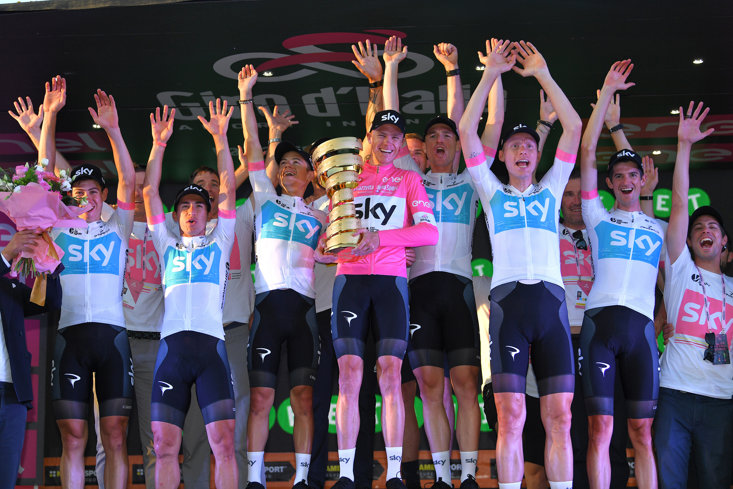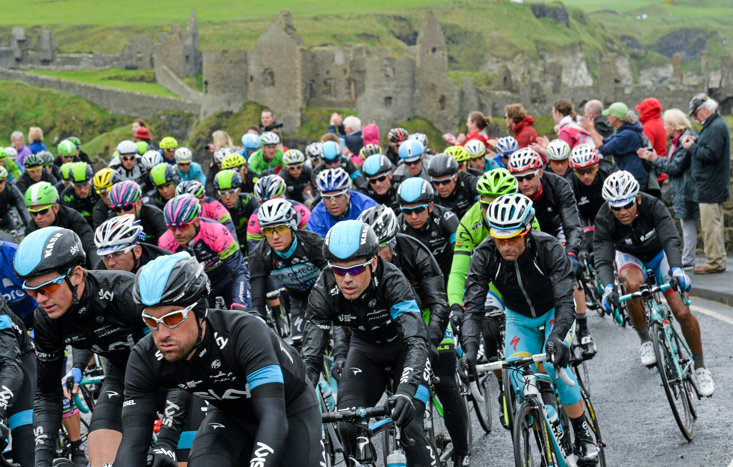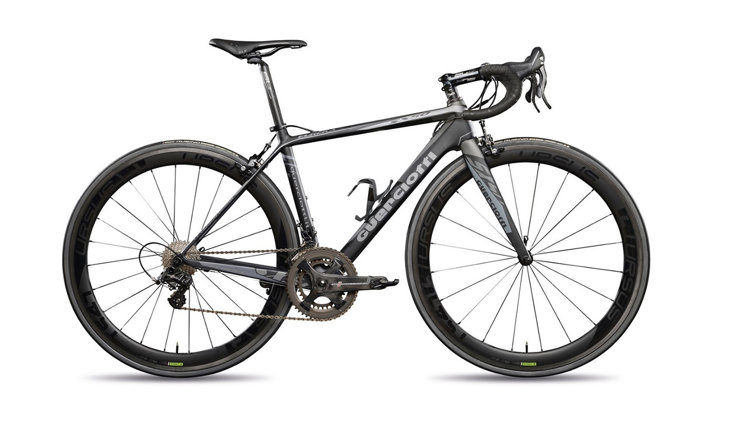The Giro d’Italia, the second child of the cycling world. A lifetime spent in the shadow of the older, more popular Tour de France. But save your pity, because this race is growing in stature year on year and now boasts a global audience of 800million. Take that, France!
This year’s 103rd edition was delayed by six months, but it truly has been worth the wait after two weeks of non-stop action. As we speak, the flat stage 19 of the race is taking place, with Wilco Kelderman leading Team Sunweb teammate Jai Hindley by just 12 seconds, meaning we could be in for the closest race of all time this year. With just two stages to go, the arduous mountains of stage 20 could make or break their dreams, or will the final-day time trial this weekend decide their fate?
To whet your appetite ahead of the big finale, we bring you some of the biggest and best numbers behind this historical race...
174
That is the number of countries the event is broadcast in across the world, reaching a whopping 800 million people across five continents. That total viewing figure, across all stages, means more people watch this event than the Superbowl (150m) and the Champions League final (400m). To put it simply, it’s huge.The Italians unsurprisingly adore this event like nobody else, with their live audience increasing by 66% since 2010 thanks to the launch of digital platforms. The sale of broadcasting rights in Asia and North Africa this decade have also helped raise that worldwide figure, while Chris Froome’s victory in 2018 got 3.8 million Brits to watch the race on subscription channel Eurosport.

143,000
That is how many copies of Italian newspaper La Gazzetta Dello Sport are sold every single day. Despite physical sales dropping over the last 15 years due to the rise of the internet, it still remains Italy’s biggest-selling sports newspaper, but why on earth are we wittering on about an old Italian newspaper? Well, the Giro was originally created by ‘La Gazzetta’ as a way of generating more newspaper sales. It worked.
The editor at the time, Tullo Margagni, was petty in a way that only editors can be and telegrammed the paper’s owner, Emilio Costamaga, suggesting they should create a cycling race after hearing that the Corriere della Sera, their rival paper, was going to hold a bicycle race of its own, having recently hosted a successful car race. The next day a front page splash on La Gazzetta was published, announcing to the world that their very own race was to be held in 1909 and we haven’t looked back since. To this day, the theme colour of the race, pink, worn by the race leader, is taken from the pages of that very newspaper.
1
The Giro d’Italia is a strictly males-only event. The first women’s race, named Giro Rosa, didn’t come around until 1988 but that doesn’t mean no female has ever ridden the Giro d’Italia. In fact, in one of the quirkiest stories in sport, Alfonsina Strada competed in the 1924 edition of the race, after she hid her identity and race organisers mistook her for a man! Dropping the final (feminine) vowel from her name on the entry form allowed her to start the race, and although journalists had already uncovered the story at the start line, by then it was too late.
She faced severe weather, several crashes and reportedly even had half of her broken handlebar replaced by a peasant's broomstick, but she became a hero. She finished outside the time limit on stage 7 and was excluded from the race, but Emilio Colombo of La Gazzetta allowed her to finish as an individual after considering the press coverage and commercial benefit at the time. The day after being officially excluded, she was lifted off her bicycle by an adoring crowd and raised onto their shoulders before finishing the race in Milan.
After 1924 she kept cycling, but this time as a woman. She had gained the respect of the media and set the female world record for distance covered in an hour in 1938 before tragically being crushed by a motorcycle as it fell off its stand in 1959.
She remains, to this day, the only woman to have completed the Giro d’Italia.
265,000
That is the amount of pounds awarded to the winner of the event. Seems like a decent amount, but getting our calculator out, that works out at just a 10th of the prize money available to the winner of the Tour de France, despite the race being eight miles longer. Seems harsh.
By the end of today 2,037 miles will have been covered by the riders and just two stages will remain, but the hardest may still be yet to come. On the penultimate stage, Alba to Sestriere, every rider will face four huge mountain climbs rising to 2,035 metres above sea level. The killer stage, that will make or break the potential champions.
It isn’t all about Italy however, one of the quirks of the race lies in its name. It may be called the Giro d’Italia but that doesn’t mean the race always starts in the Bel Paese. It has previously begun in Jerusalem, Amsterdam and even Belfast back in 2014! This year it was meant to start in Budapest but Covid-19 put a stop to that. This year the riders began at the tip of Italy’s famous shoe and worked their way up the country, and they will end the final stage in the northern city of Milan.

6,000
That is how many calories riders burn every day while cycling on the Giro in the modern era. That is equal to 11 Big Macs, 31 Krispy Kreme doughnuts or 63 Freddos. Delicious. The 6,000 calories is an average, as the length and specific route changes every year.
The longest ever edition of the Giro was back in 1954 when Carlo Clerici covered 2,694 miles in 129 hours and 13 minutes, while the longest-ever single stage was a whopping 267 miles back in 1914, that is around 18,000 calories burnt over 17 hours of cycling - that works out as 33 Big Macs! Now where is the nearest McDonalds...
5
This is the number of years the black jersey, or maglia nera, was awarded in the race. Honestly, we think the Giro has thrown up some of the greatest stories in sporting history but this might be the best of the lot. Awarded to the last man to finish, the idea came from Italian footballer Giuseppe Ticozzelli, who ‘raced’ in 1926 wearing his team’s black football shirt. He completed just three stages and took his time too, regularly stopping for breaks and lunches, before being forced to pull out of the race after being run over by a car.
Fast forward to 1946 and the maglia nera was to be awarded for the first time. Despite many riders fearing this award, surprisingly, the fight was seriously competitive. Luigi Malabrocca and Sante Carollo did everything to finish last within the time limit - including hiding in barns, bars and puncturing their own wheels! This black jersey was a real achievement back in the day, worn with pride by the riders. It’s a shame it only lasted for five years due to the rising professionalism of the sport.

£20,000
That is how much a bike can cost in the Giro d’Italia, these are serious bits of kit. They weigh around 7kg, are made with specially-designed composites and aerodynamically tested in wind tunnels to provide the highest top speed. The bikes also now carry little black sticks to the naked eye, weighing just 180g. These transmit live data relating to that rider including speed, heart rate and cadence. Fancy.